By Sean Fagan
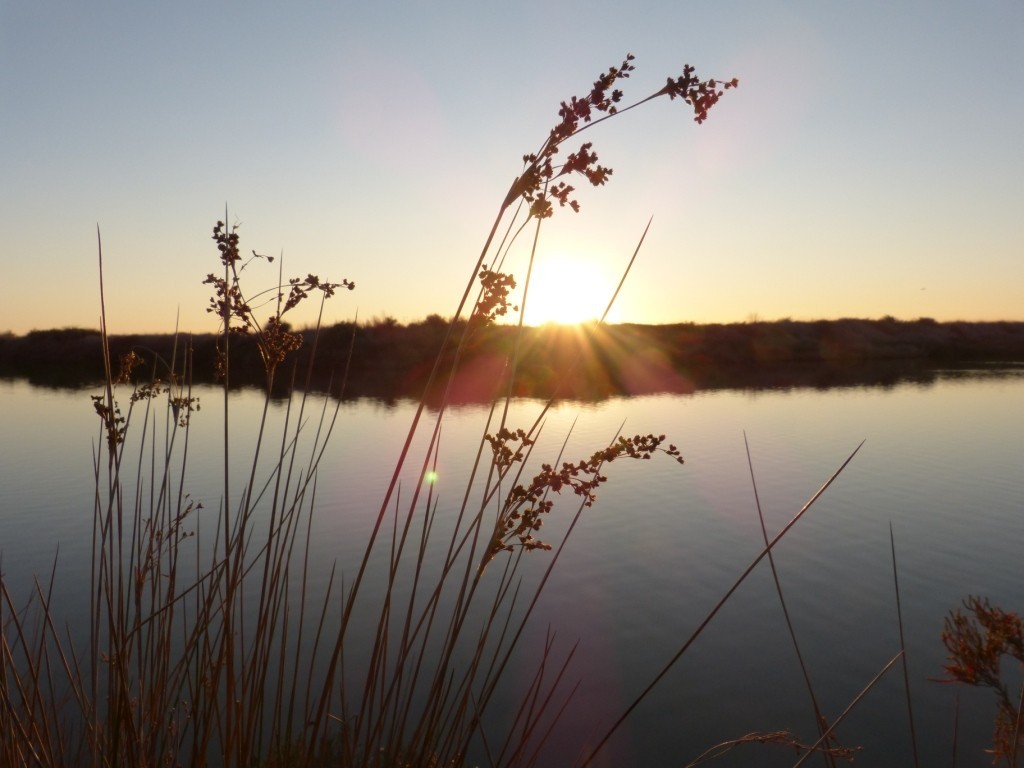
On the banks of the lovely Riberio De Sao Lourenco - 'The brook of San Laurentum' (Photo: Sean Fagan, south Portugal).
.
12 Things I Learned in South Portugal during Winter
.
Over the last few winters I’ve taken to hiking and camping in south Portugal (the Algarve region). I’m big into tracking and bird-watching - so the wildlife-rich region of the Algarve provides a much needed boost for myself in that regard.
Of course the typically clear skies and sunny weather is greatly appreciated too. And it’s not too hot - so it's possible to be comfortably active throughout the day.
There is an abundance of high quality articles offering advice about the outdoors. With that in mind, I wrote this article from a more personal point of view with the aim of addressing some of the more overlooked aspects of hiking and camping in a hot, arid country.
Some of the tips are practical while others border on the whimsical - but that's the outdoors for you sometimes, it can be a funny place where the unexpected can happen...
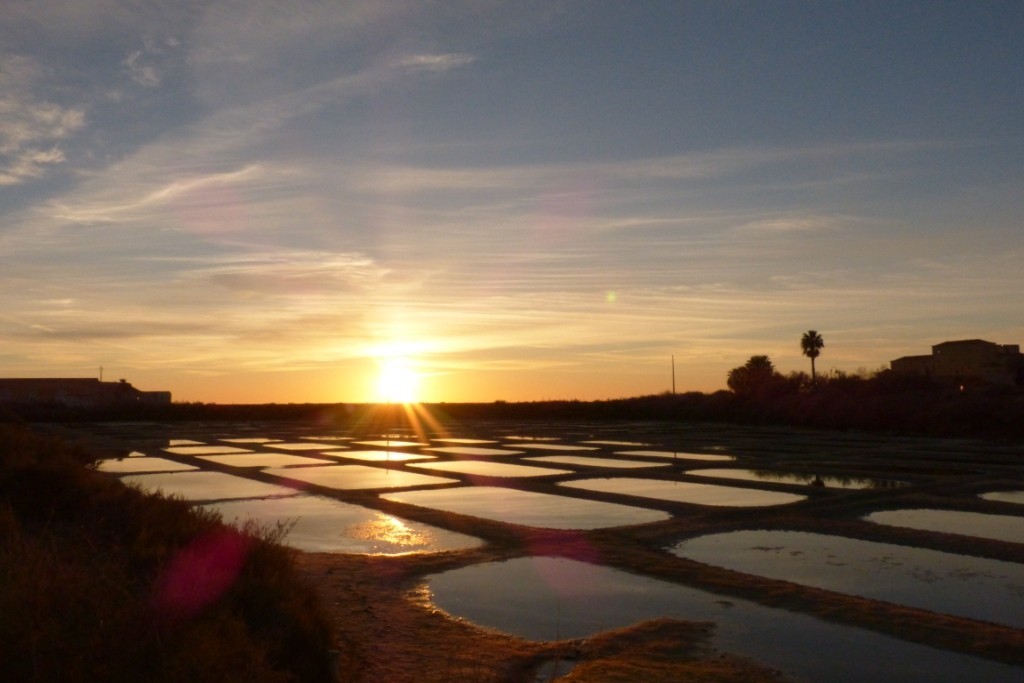
The numerous salt-pans along the Algarve coast are brilliant for bird-watching and hiking. In addition, the public trails that border many of the salt pans have a rich variety of wild plants (many of which are edible). Well worth checking out (Photo: Sean Fagan).
.
12 Things I Learned from Camping & Hiking in Portugal
.
1) It's Cold at NightDuring winter in the Algarve, from dawn to about 11am - it's generally chilly (even though the sun is often shining throughout the early morning hours).
However, from around 11am the sun begins to forcefully heat the land - until about 4pm.
As the sun sets, the temperature can drop precipitously – often tumbling down from a daytime temperature peak of around 25-27 degrees centigrade to single digit temperatures (often to freezing point).
Be prepared – hat, warm jacket, long pants, scarf/headover and even gloves and thick socks are often required (make sure these items are stuffed into your backpack if you plan on hiking into the evening).
And don't forget to bring a warm sleeping bag. It's important.
If you're sleeping out in the open under a tarp, make sure you put your sleeping bag into a breathable bivvy bag. Bivvy bags are important as they prevent ambient moisture and chilling breezes from cooling you in your sleeping bag.
.
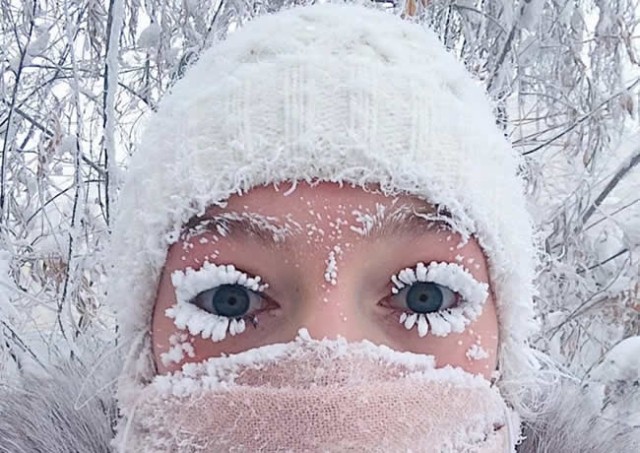
Okay, it's not quite this cold at night in Portugal during winter but you get the idea (Photo: Wikimedia commons images).
Much of the vegetation of Portugal is really tough and often adorned with spines and thorns. What this means is wearing long pants when hiking through such vegetation. It also means wearing something tougher that a flimsy T-shirt for the upper body (I wear a tough, light gilet to protect my torso when wandering about).
The feet need to be covered too – I usually wear leather trekking shoes. Sandals don’t work. Leather protects the feet against tough vegetation and the entry of sand (sandy trails are common throughout Portugal). Consider wearing leather hiking boots for ankle support when hiking over uneven, hilly terrain.
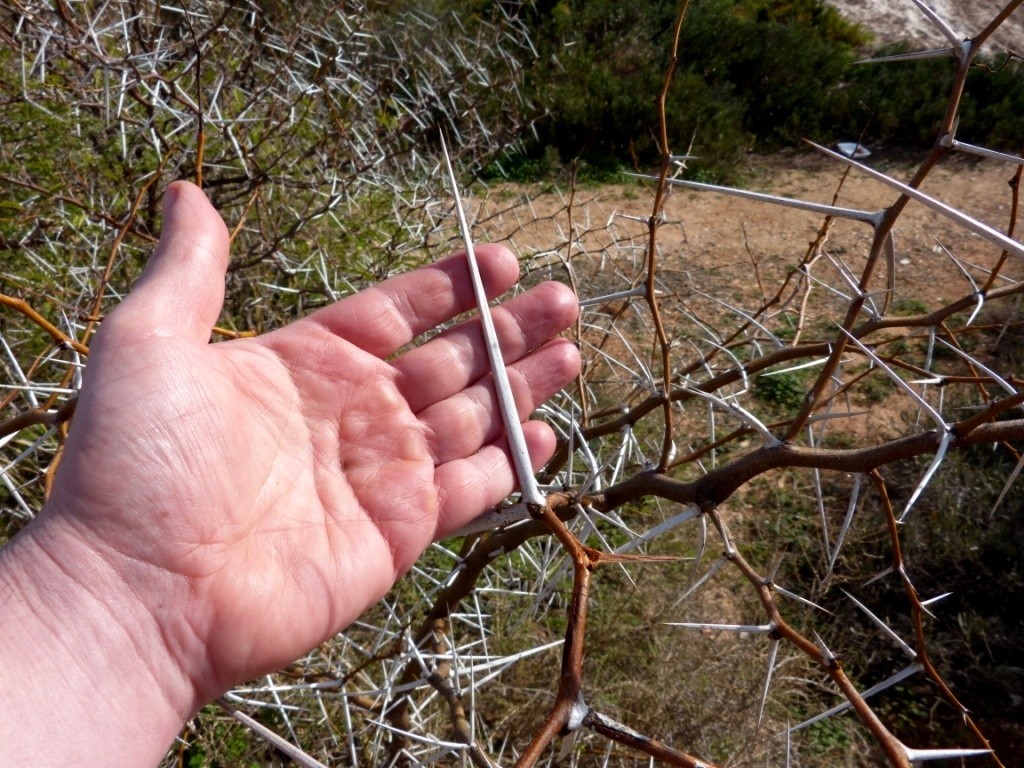
Just look at these ridiculous acacia thorns (Photo: Sean Fagan, south Portugal).
.
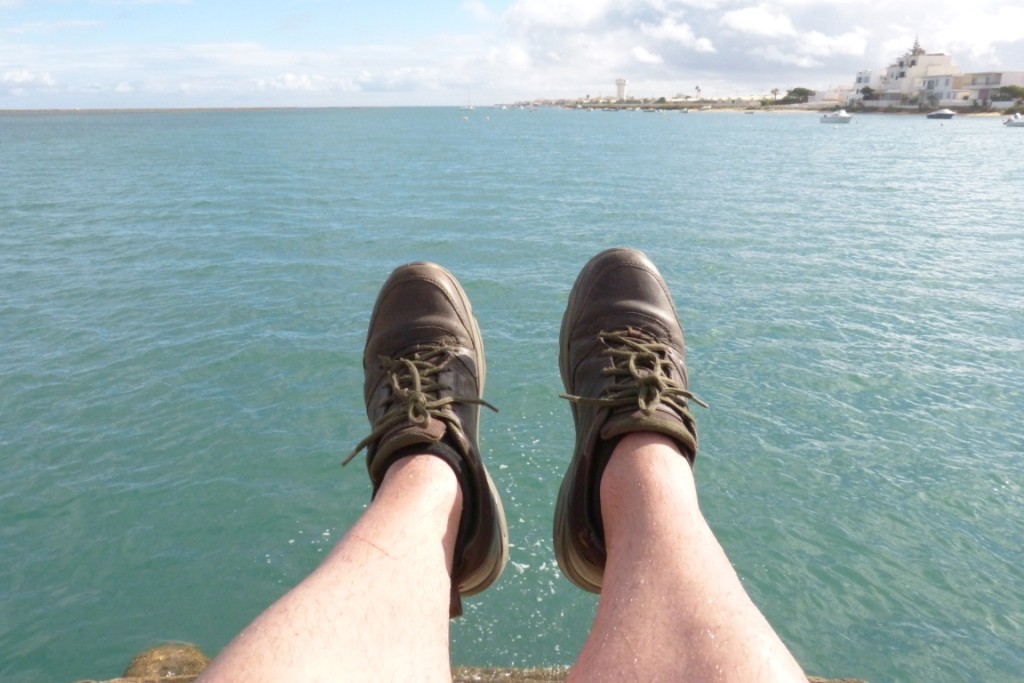
I'm very fond of my leather shoes while hiking around Portugal. They are comfortable for long hikes and protect my feet against a multitude of sins - such as thorny plants, sand, even ants. When practical, oil or polish your leather footwear - as dry, warm weather can cause leather to crack, stiffen and generally under-preform. (Photo: Sean Fagan).
.
3) Ants Kick Ass
Portuguese ants don't mess about, and they are pretty much everywhere. The dry soil, warm temperatures and other factors allow many ant species to thrive.
Be careful of where you sit and sleep. Don’t park yourself near or on the innumerable ant nests that punctuate the landscape (they often nest underground with a tell-tale entrance hole where many ants enter and exit).
If ants get under your clothing – quickly remove them. Just do it – they might happily wander over the terrain of your body for a while – but that doesn’t last long – they will soon feel threatened and start to bite and give you the most itchy, persistent bites that can flare up periodically for days.
It's important that you make an effort to keep a reasonably clean campsite and that all your food (and food waste) is preferably sealed and suspended (plastic shopping bags do this job very well).
Ants are voracious scavengers and once a few ants find your delicious camp food it wont be long until a small army of ants are milling around your campsite in a feeding frenzy. They are amazingly efficient at finding food.
.
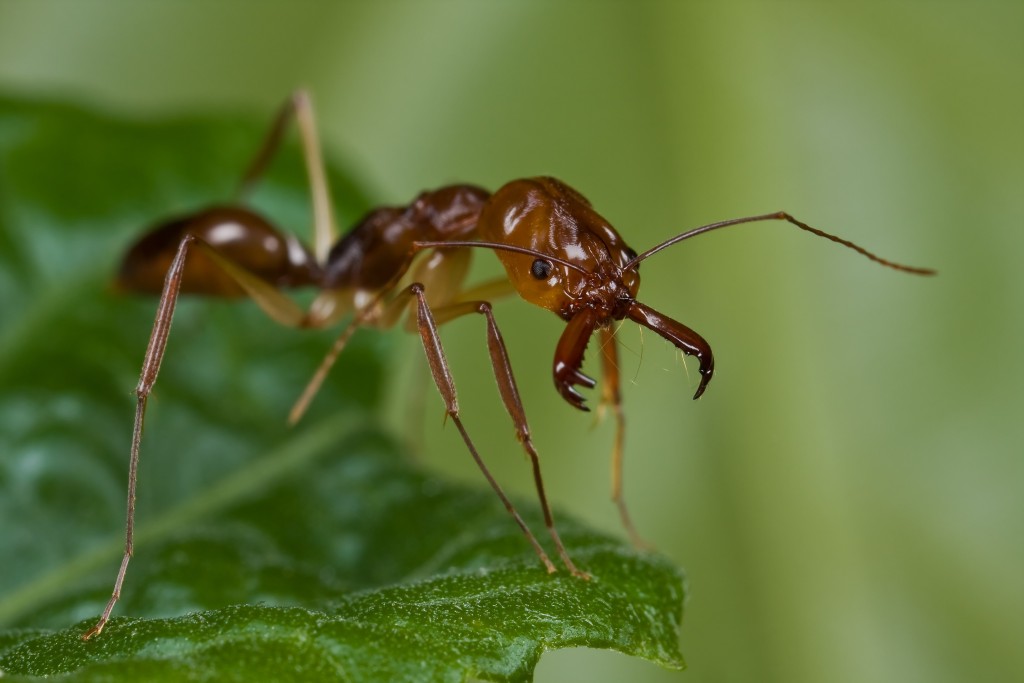
Tiny but tough..ants are common in Portugal and can be found in wild, rural and even urban areas (Photo: Wikimedia commons).
.
4) Beware of DogsWhatever it is about Portugal there are quite a few stray dogs - but from my experience it’s not the stray dogs that are worrisome – it’s the dogs accompanying their owners on walks. It’s not a common danger but it’s there, especially near urban areas.
While on a forest hike, I’ve had one dog owner barely able to restrain a big muscular beast of a dog from launching itself at me (it looked like a pit-bull on steroids).
I’ve also had the deeply frightening experience of having a dog suddenly bark like crazy near me while I was wandering around a wood at night.
The sandy soil of Portugal will readily reveal tracks - so keep an eye out for dog tracks and if you can (and when practical) avoid those areas.
What’s especially important is to not locate your tent or tarp near a trail that is frequented by dogs.
Carrying a walking staff is also a good idea as this can discourage curious or aggressive dogs from approaching you.
(Quick tip: remove your sunglasses. Dogs can be intimated by sunglasses as they rely a lot on body language and facial expressions (including the eyes) when assessing a stranger on their rambles).
If you want to learn more about dog/canine tracks, click here.
.
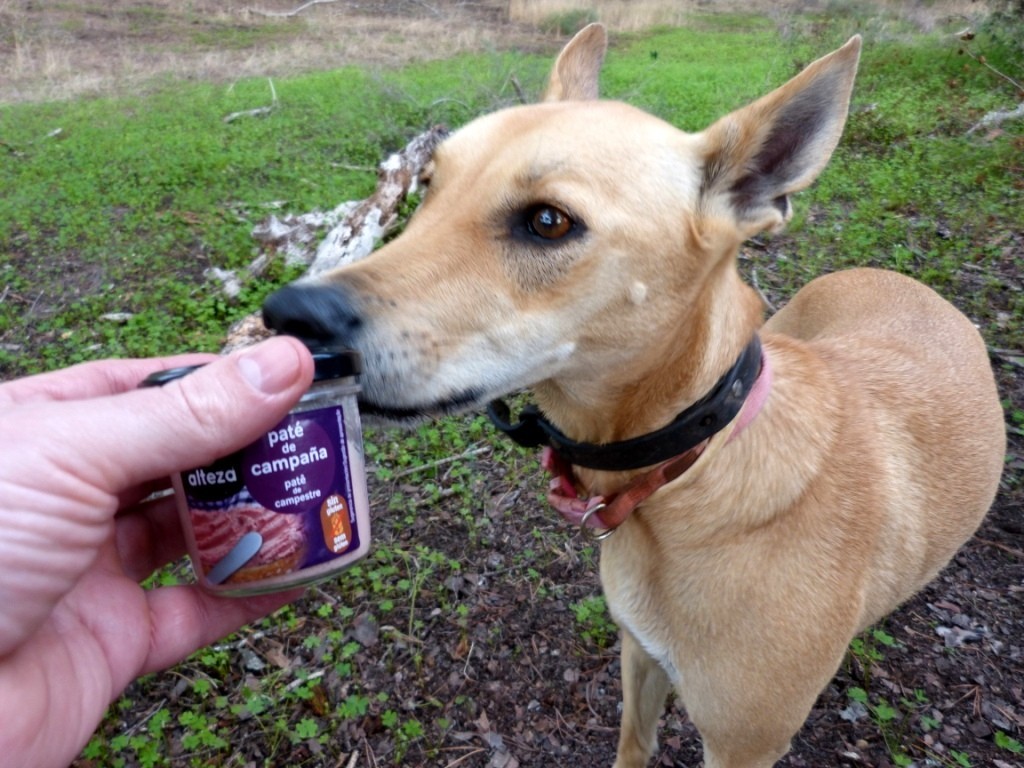
One of the best hikes I ever had in Portugal was with this friendly dog. We had a grand adventure that day - although I did have to part with some of my food to keep him happy, as in photo. I strongly suspect this dog was not a stray as I intentionally did a long, looping hike that brought us back to our original meeting point. At that point the dog took off, presumably homeward bound (Photo: Sean Fagan).
.
5) Madness is a Matter of Perspective...Not to take away from the generally chilled out, warm hospitality of the Portuguese people but a lot of locals will think you’re slightly mad when only wearing shorts and a t-shirt in winter. Many cannot fathom why or how you can wear so little while they are wrapped in winter layers.
I mostly wear long pants and a long sleeved top when in Portugal during winter but I also wear shorts and t-shirt when the weather is warm and I’m hiking out in the open (away from thorny plants).
If you do decide to wear shorts and a t-shirt be prepared for the odd stare or giggle to be cast in your direction. Best to just get used to it. .
. 6) There is a Casual Right to Roam in PortugalThere a causal, unspoken tolerance to roaming by landowners in Portugal. Take note of the word, casual. As long as you’re not being silly most landowners will give a cursory wave or a nod of the head if they catch sight of you hiking on their land. This has been my experience so far, and I've met quite a few landowners on my walks.
.
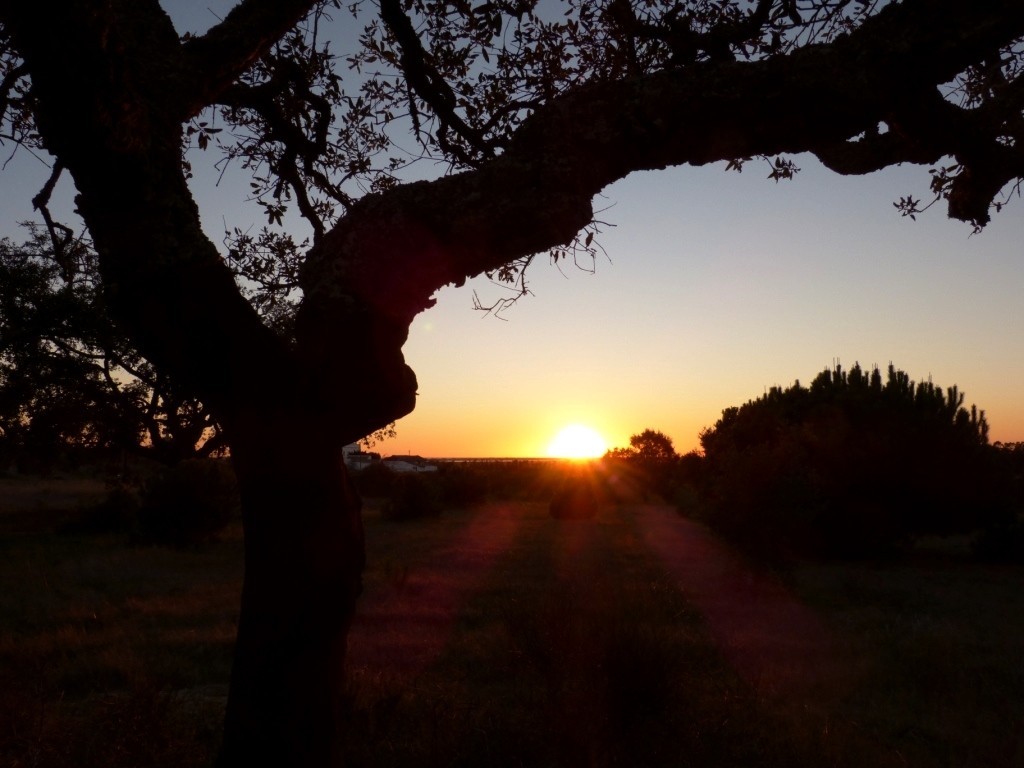
A cork oak at sunset. Cork oaks, as in photo, are dotted throughout the Portuguese landscape. They often form a major part of the beautiful oak and pine woods of Portugal. Thankfully, landowners generally allow walkers to roam through these stunning woodlands (Photo: Sean Fagan).
.
7) Bring Good Binoculars and Carry Them on your PersonThe bird life of the Algarve is off the charts with over 430 species recorded.
A lot of spectacular bird species regularly haunt the skies – such as eagles and the occasional vulture (I’ve had more than my fair share of neck creaks from staring at booted eagles drifting through sunny, azure skies above).
My general approach is to either have my small, field binoculars in my pocket for easy access or have larger, more powerful binoculars around my neck. Either way, I nearly always carry binoculars to get some amazing views of whatever bird species that may appear on my walks.
Avoid the temptation to leave your binoculars in your backpack. It’s just too much of a faff to get them out for watching birds and wildlife in general. Wildlife encounters are usually brief; by the time you get your binoculars out of a backpack the wildlife will have evaporated into the landscape.
The great bird-life of Portugal is a great boon for the nature-lover, partly because a lot of the terrestrial wildlife (such as mammals and reptiles) are either elusive or nocturnal in Portugal.
.
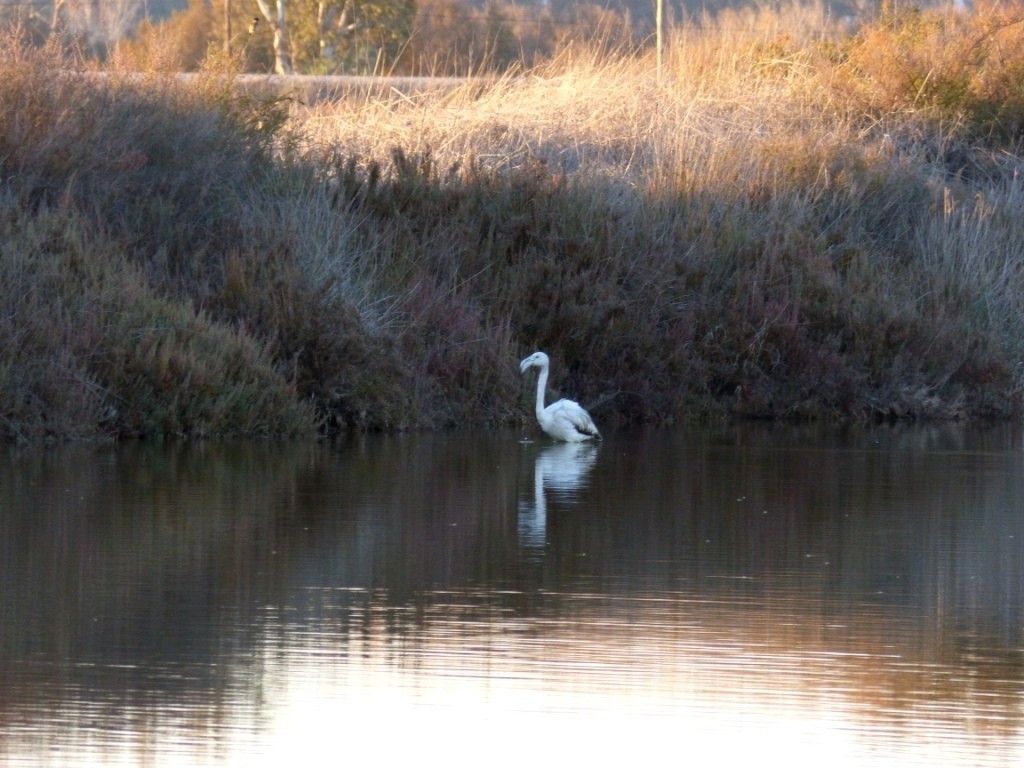
I still can't quite believe I saw this flamingo walk pass my campsite one sunny morning in Portugal (Photo: Sean Fagan).
.
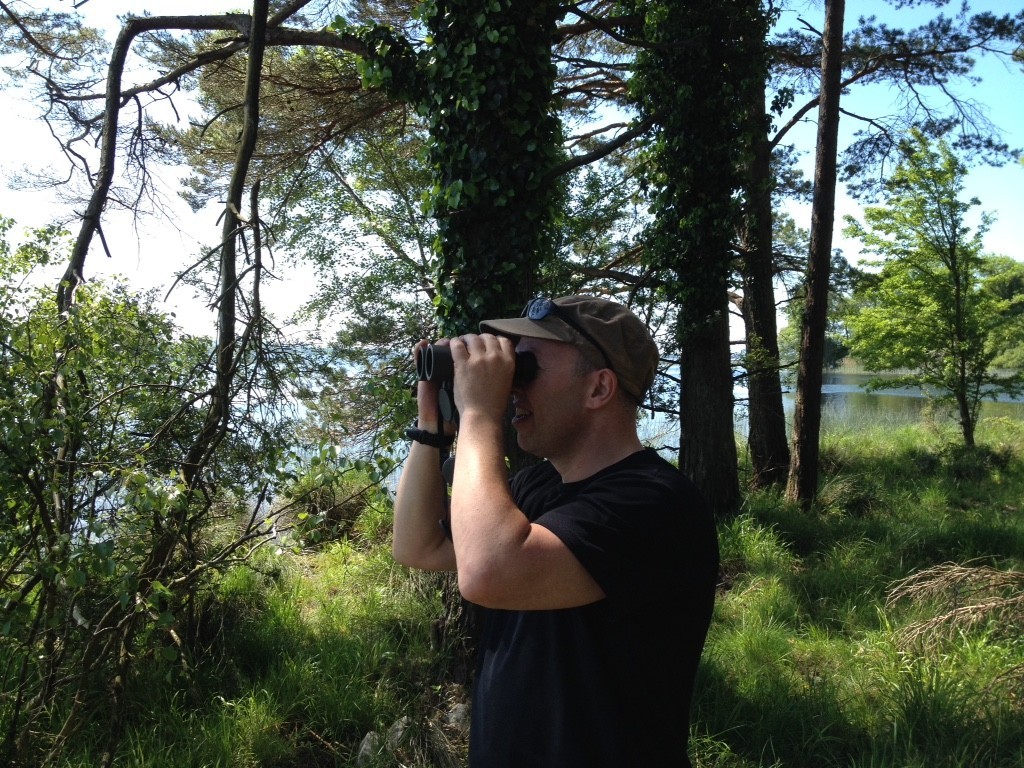
Don't forget your binoculars. In photo, I'm using binoculars with an 8 x 32 magnification - this is a good all-round magnification for wildlife watching. Good quality 8 x 32 binoculars are usually compact with good light quality and resolution - perfect for the outdoors (Photo: Sean Fagan).
.
8) Respect Hot, Sunny WeatherFrequently hydrate. Wear good shades, along with a sun hat, a long-sleeved top and long pants to protect your head, arm and legs from the sun. Also, pace yourself and take shade-breaks when needed.
The hot sun of the Algarve will beat you down if not respected – even in winter. When route planning a hike – try to steer your route, at least partially, along natural or man-made bodies of water. Always a good precaution in hot, dry countries.
Occasionally I wear shorts and a t-shirt but I don’t skimp on the sun cream when I do.
.
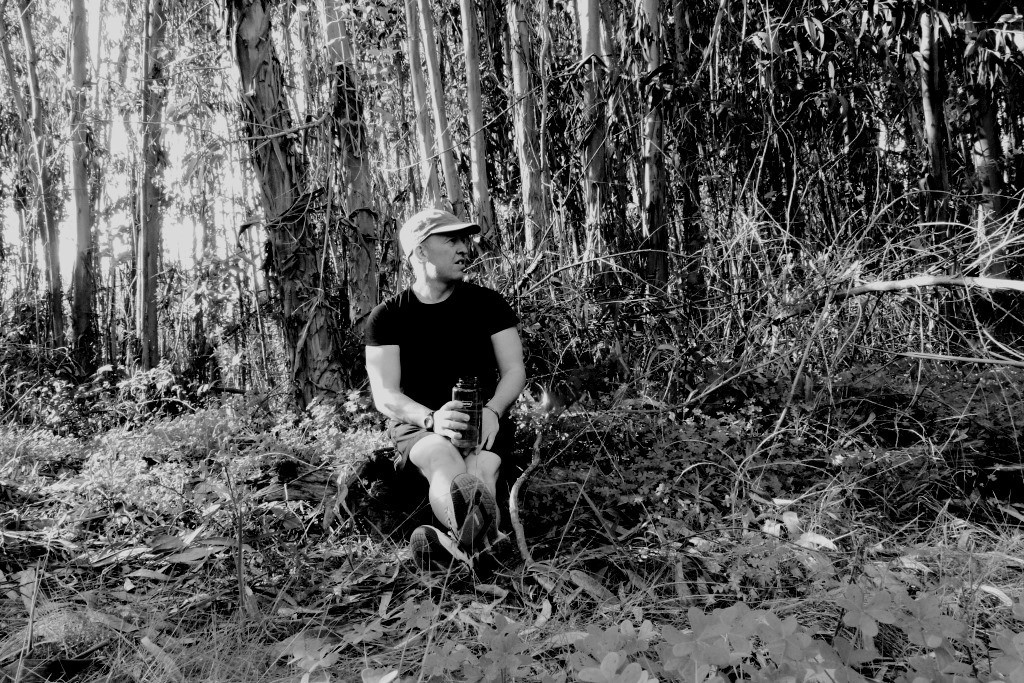
Taking a brief shade and hydration break in south Portugal. Whenever you feel the heat and sun is getting to you - seek shade as soon as possible and drink some water...to clear the head and replenish the body (Photo: Sean Fagan).
.
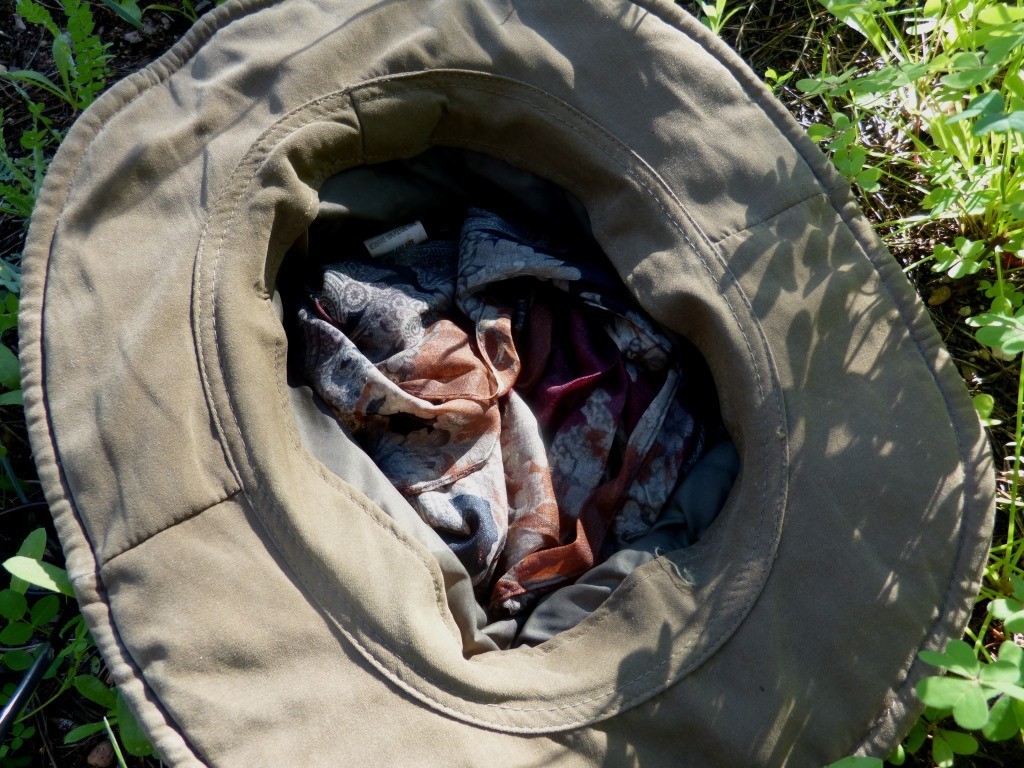
Quick hot-weather tip. Soak a bandanna in water, wring it out, then place inside your sun hat. The shade of the hat will prevent the moisture in the bandanna from evaporating and keep your head significantly cooler. A cool head in hot weather is a clear-thinking head (Photo: Sean Fagan).
.
9) Avoid Eucalyptus Plantations if you canEucalyptus tree plantations are dotted throughout Portugal. Besides the irritating presence of mosquitoes often associated with these plantations they are also ecological dead-zones. They really are a sterile, alien environment devoid of any significant flora, fauna or fungi.
In addition, the dead, eucalyptus leaves on the woodland floor and the shedding bark of eucalyptus trees are highly flammable.
These plantations are good in a pinch when there is a lack of shade and you want to take a shade-break…where you can even light a campfire to cook food, boil water and deter biting flies. But extreme caution must be applied when lighting a fire in these plantations. Also, local landowners can quite rightly be very annoyed at you for lighting a fire in such a flammable environment.
(*How to Identify eucalyptus trees)
.
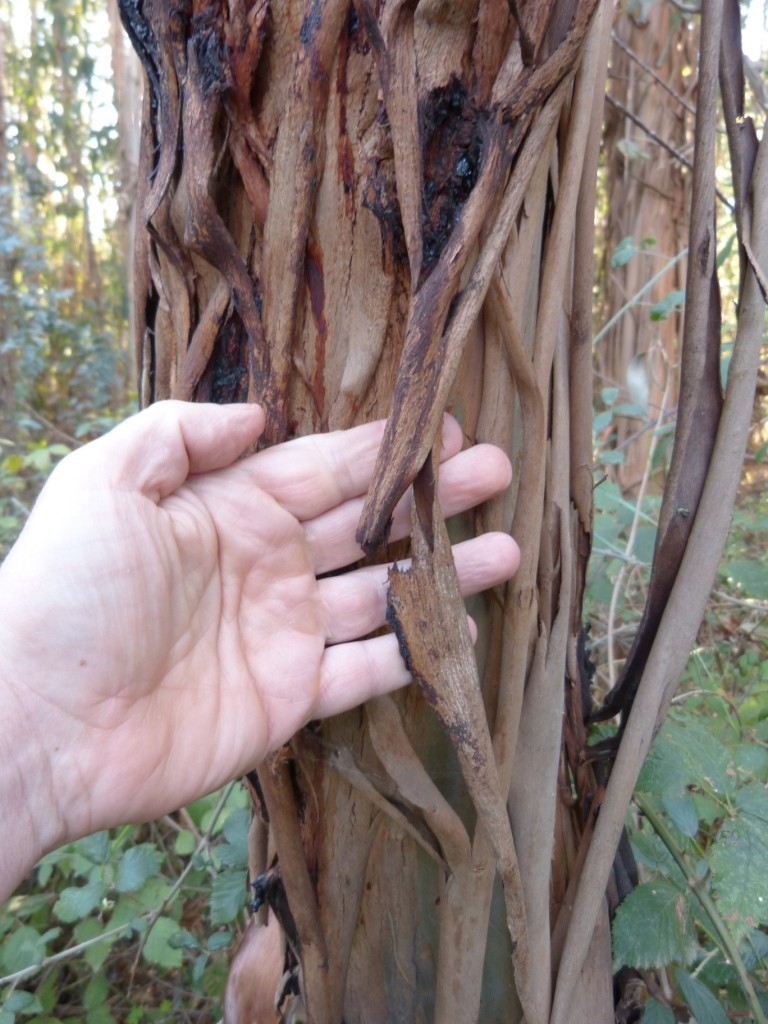
The shedding bark of eucalyptus trees is highly flammable (Photo: Sean Fagan).
.
10) The Cafe and Restaurant Culture in Portugal is HugeEven the smallest Portuguese village may harbour a delightful cafe or restaurant with the usual delicious, fresh, healthy food that is typical of Portugal.
What this can mean is that you can plan hikes with as many or as few pit stops in cafes & restaurants en route, even in relatively remote regions of Portugal.
I remember one hike on a hot day. I was dog-tired from the heat. On route back to camp I made a detour on a rural road. Out of nowhere – a lovely restaurant materialised along this desolate rural road (this is not an uncommon occurrence in Portugal). In I walked, and lo and behold – snooker ace, Ronnie O Sullivan was on the television being his usual, brilliant potting self. I sat in a chair, a little incredulous.
Top rate snooker and delicious food after a tiring hike? Hiking nirvana (well, my version of hiking nirvana).
.

A napkin with 'Good Appetite' in Portuguese. The cafe and restaurant culture of south Portugal is great but a word of caution - most cafes and restaurants in Portugal close on Sundays (Photo: Sean Fagan).
.
.
11) The Public Transport Service of Portugal is Really GoodDespite the sad fact that Portugal suffers from a beleaguered economy they still have a very well-run and cheap transport service. Don’t be afraid to depend on it to get to wild, remote places and back to civilisation again. The train service is particularly enjoyable and reliable. Not to take away from the national bus service, which is also excellent (links about trains and buses provided at end of article).
.
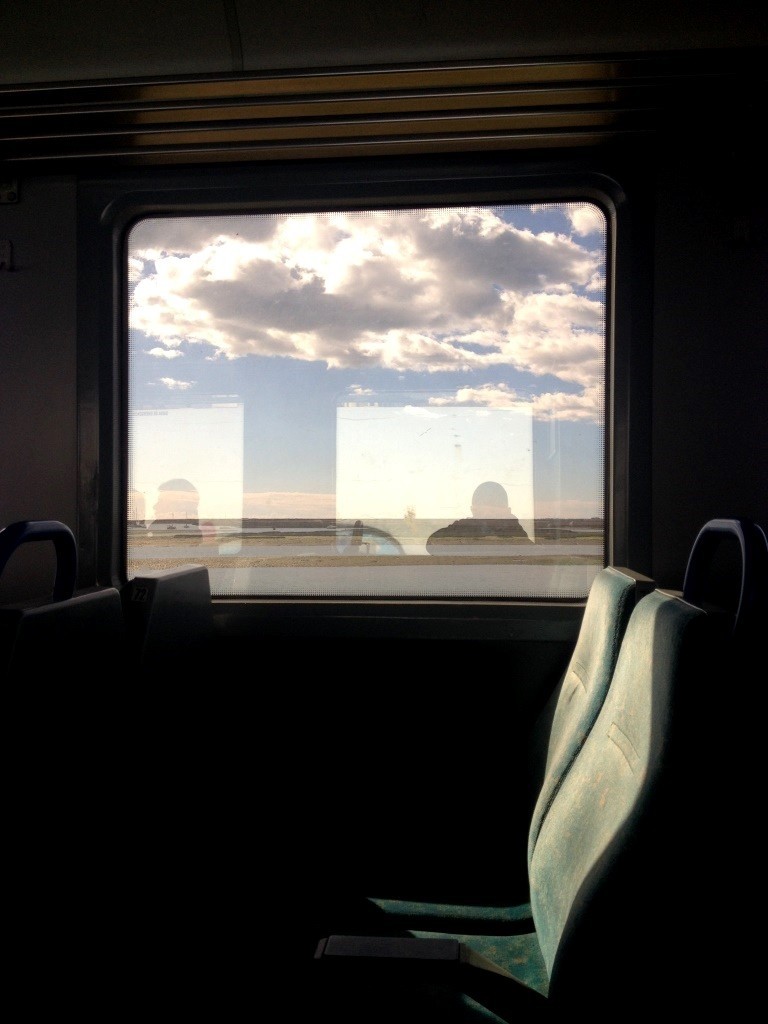
The train service of Portugal is very well-run. It's also a great way to witness the varied landscapes of the Algarve. Once, while passing along a nature reserve on a train I spotted a glossy ibis, a male hen harrier, a female marsh harrier and an avocet. Four elusive, stunning bird species in less than 5 minutes! (Photo: Sean Fagan).
.
.
12) Take the Bad with the Good...There is a fair amount of poverty in Portugal. Prepare yourself for this reality. When aboard, I love wandering off the beaten track both in wild and urban locations. I like to see what a place is about. What this means is seeing a lot of the good and the bad - and Portugal, like every country, has some bad.
I once had a long chat with an elderly, homeless French guy near Faro - and the stilted English/French conversation we had was both humbling and interesting.
You generally won’t have this kind of enriching, often unique experiences while cozily nestled in an air-conditioned tour bus - or from only visiting the big tourist attractions (I'm not against tourist attractions per se).
My general stance when aboard is to meet a broad section of local people in rural and urban areas. I like to mix it up a bit and have what I consider a more authentic experience. And I don’t mean to glamorise this approach, I’ve had plenty of "authentic" experiences that were, quite frankly, unpleasant.
Occasionally though, this approach is life-affirming (I mean that in the most un-cheesy meaning of that phrase).
It also leaves a lot of room for the unexpected…sure isn’t that one of the cornerstones of adventure?
.
Overall, the Algarve is a magnificent winter-destination for those that love the outdoors and nature..
If you’re looking for a nature/culture winter-tonic - then I simply can’t recommend south Portugal enough.
The people are friendly, the weather is beautiful and the wildlife and landscapes are rich and varied.
What more does one need for a great outdoor holiday?
.
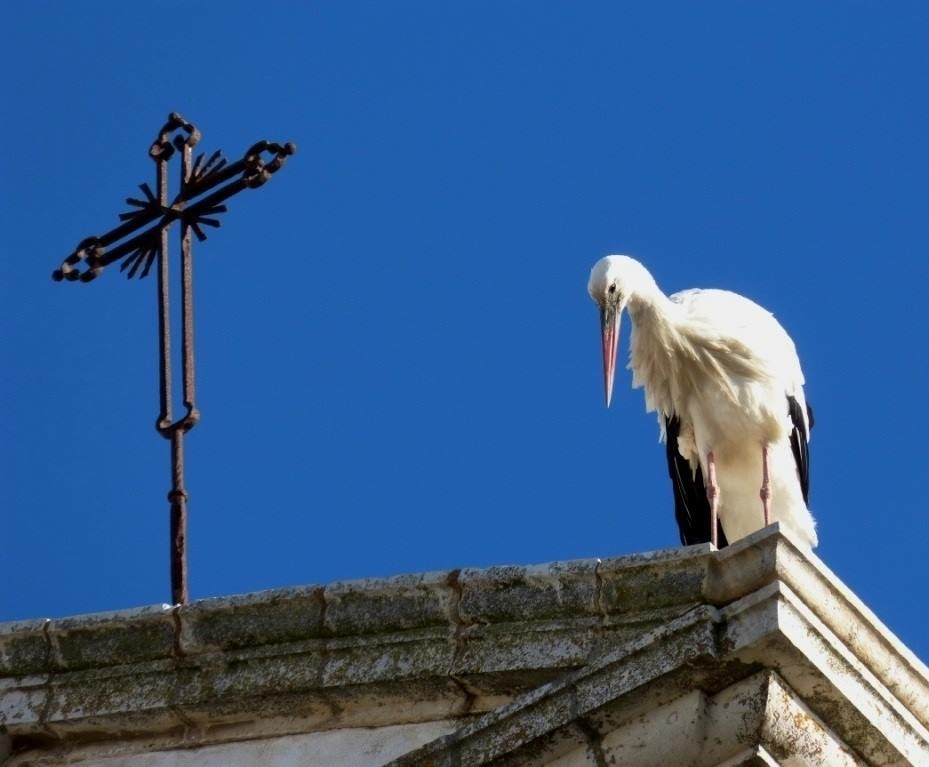
"Let us Pray". No matter where you go - have fun. In photo, a white stork standing atop a medieval church in Faro (Photo: Sean Fagan).
.
..
Related articles on this website:
- Fire Safety in Dry Woodlands
- Exploring Different Types of Woodlands
- How to make a Walking Staff
- Have Tracking, will Travel
.
Resources:- Nature Reserves and Parks of the Algarve (excellent website)
- Bus & Train Map of the Algarve (updated)
.
I use the small, beautiful city of Faro as my port of entry to south Portugal (Faro is well supplied with cheap Ryanair flights throughout winter).
.
One Final Tip: Wear Insoles
The underlying ground surface of south Portugal can roughly be divided into two categories: sandy...or sun-baked and hard.
It's the sun-baked, hard soil which is an eye-catching, orange-red colour that is interesting as regards hiking.
It's very hard.
It's highly advisable to put good, cushioning insoles into your hiking footwear - because after a couple of days of hiking on this unforgiving surface the feet can start to feel stiff and sore (Tip: soak and revive tired feet in cool water whenever you can).
.
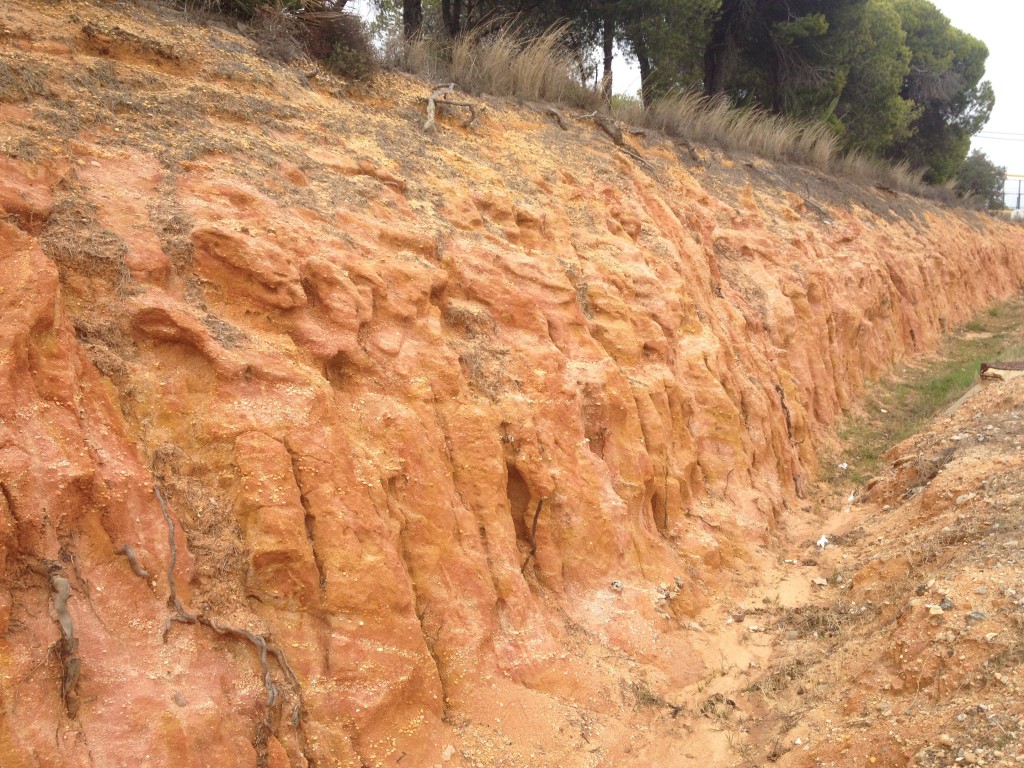
Much of south Portugal is covered with this hard, reddish, clay-rich soil. The striking colour is caused by iron oxide - similar to the reddish soils and sands found throughout much of Australia (Photo: Sean Fagan).

Recent Comments